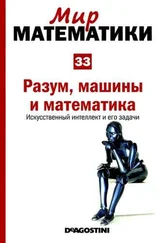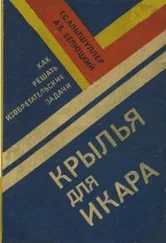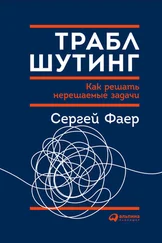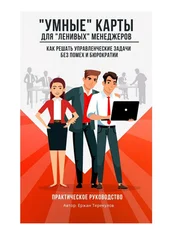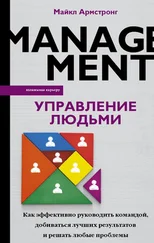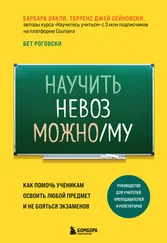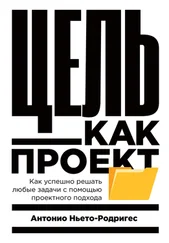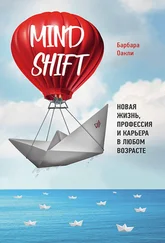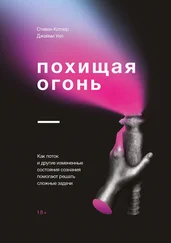Барбара Оакли - Думай как математик - Как решать любые задачи быстрее и эффективнее
Здесь есть возможность читать онлайн «Барбара Оакли - Думай как математик - Как решать любые задачи быстрее и эффективнее» — ознакомительный отрывок электронной книги совершенно бесплатно, а после прочтения отрывка купить полную версию. В некоторых случаях можно слушать аудио, скачать через торрент в формате fb2 и присутствует краткое содержание. Год выпуска: 2012, Жанр: Прочее, на русском языке. Описание произведения, (предисловие) а так же отзывы посетителей доступны на портале библиотеки ЛибКат.
- Название:Думай как математик: Как решать любые задачи быстрее и эффективнее
- Автор:
- Жанр:
- Год:2012
- ISBN:нет данных
- Рейтинг книги:4.67 / 5. Голосов: 3
-
Избранное:Добавить в избранное
- Отзывы:
-
Ваша оценка:
- 100
- 1
- 2
- 3
- 4
- 5
Думай как математик: Как решать любые задачи быстрее и эффективнее: краткое содержание, описание и аннотация
Предлагаем к чтению аннотацию, описание, краткое содержание или предисловие (зависит от того, что написал сам автор книги «Думай как математик: Как решать любые задачи быстрее и эффективнее»). Если вы не нашли необходимую информацию о книге — напишите в комментариях, мы постараемся отыскать её.
Думай как математик: Как решать любые задачи быстрее и эффективнее — читать онлайн ознакомительный отрывок
Ниже представлен текст книги, разбитый по страницам. Система сохранения места последней прочитанной страницы, позволяет с удобством читать онлайн бесплатно книгу «Думай как математик: Как решать любые задачи быстрее и эффективнее», без необходимости каждый раз заново искать на чём Вы остановились. Поставьте закладку, и сможете в любой момент перейти на страницу, на которой закончили чтение.
Интервал:
Закладка:
Kapur, M., and K. Bielczyc. “Designing for productive failure.” Journal of the Learning Sciences 21, 1 (2012): 45–83.
Karpicke, J. D. “Retrieval-based learning: Active retrieval promotes meaningful learning.” Current Directions in Psychological Science 21, 3 (2012): 157–163.
Karpicke, J. D., and J. R. Blunt. “Response to comment on ‘Retrieval practice produces more learning than elaborative studying with concept mapping.’” Science 334, 6055 (2011a): 453–453.
Karpicke, J. D., and J. R. Blunt. “Retrieval practice produces more learning than elaborative studying with concept mapping.” Science 331, 6018 (2011b): 772–775.
Karpicke, J. D., et al. “Metacognitive strategies in student learning: Do students practice retrieval when they study on their own?” Memory 17, 4 (2009): 471–479.
Karpicke, J. D., and P. J. Grimaldi. “Retrieval-based learning: A perspective for enhancing meaningful learning.” Educational Psychology Review 24, 3 (2012): 401–418.
Karpicke, J. D., and H. L. Roediger. “The critical importance of retrieval for learning.” Science 319, 5865 (2008): 966–968.
Kaufman, A. B., et al. “The neurobiological foundation of creative cognition.” Cambridge Handbook of Creativity (2010): 216–232.
Kell, H. J., et al. “Creativity and technical innovation: Spatial ability’s unique role.” Psychological Science 24, 9 (2013): 1831–1836.
Keller, E. F. A Feeling for the Organism, 10th Aniversary Edition: The Life and Work of Barbara McClintock. New York: Times Books, 1984.
Keresztes, A., et al. “Testing promotes long-term learning via stabilizing activation patterns in a large network of brain areas.” Cerebral Cortex (advance access, published June 24, 2013).
Kinsbourne, M., and M. Hiscock. “Asymmetries of dual-task performance.” In Cerebral Hemisphere Asymmetry, edited by J. B. Hellige, 255–334. New York: Praeger, 1983.
Klein, G. Sources of Power. Cambridge, MA: MIT Press, 1999.
Klein, H., and G. Klein. “Perceptual/cognitive analysis of proficient cardio-pulmonary resuscitation (CPR) performance.” Midwestern Psychological Association Conference, Detroit, MI, 1981.
Klingberg, T. The Overflowing Brain. New York: Oxford University Press, 2008.
Kornell, N., et al. “Unsuccessful retrieval attempts enhance subsequent learning.” Journal of Experimental Psychology: Learning, Memory, and Cognition 35, 4 (2009): 989.
Kounios, J., and M. Beeman. “The Aha! moment: The cognitive neuroscience of insight.” Current Directions in Psychological Science 18, 4 (2009): 210–216.
Kruger, J., and D. Dunning. “Unskilled and unaware of it: How difficulties in one’s own incompetence lead to inflated self-assessments.” Journal of Personality and Social Psychology 77, 6 (1999): 1121–1134.
Leonard, G. Mastery. New York: Plume, 1991.
Leutner, D., et al. “Cognitive load and science text comprehension: Effects of drawing and mentally imaging text content.” Computers in Human Behavior 25 (2009): 284–289.
Levin, J. R., et al. “Mnemonic vocabulary instruction: Additional effectiveness evidence.” Contemporary Educational Psychology 17, 2 (1992): 156–174.
Longcamp, M., et al. “Learning through hand- or typewriting influences visual recognition of new graphic shapes: Behavioral and functional imaging evidence.” Journal of Cognitive Neuroscience 20, 5 (2008): 802–815.
Lutz, A., et al. “Attention regulation and monitoring in meditation.” Trends in Cognitive Sciences 12, 4 (2008): 163.
Lützen, J. Mechanistic Images in Geometric Form. New York: Oxford University Press, 2005.
Lyons, I. M., and S. L. Beilock. “When math hurts: Math anxiety predicts pain network activation in anticipation of doing math.” PLOS ONE 7, 10 (2012): e48 076.
Maguire, E. A., et al. “Routes to remembering: The brains behind superior memory.” Nature Neuroscience 6, 1 (2003): 90–95.
Mangan, B. B. “Taking phenomenology seriously: The ‘fringe’ and its implications for cognitive research.” Consciousness and Cognition 2, 2 (1993): 89–108.
Mastascusa, E. J., et al. Effective Instruction for STEM Disciplines. San Francisco: Jossey-Bass, 2011.
McClain, D. L. “Harnessing the brain’s right hemisphere to capture many kings.” New York Times, January 24 (2011). http://www.nytimes.com/2011/01/25/science/25chess.html?_r=0
McCord, J. “A thirty-year follow-up of treatment effects.” American Psychologist 33, 3 (1978): 284.
McDaniel, M. A., and A. A. Callender. “Cognition, memory, and education.” In Cognitive Psychology of Memory, Vol. 2 of Learning and Memory, edited by H. L. Roediger, 819–843. Oxford, UK: Elsevier, 2008.
McGilchrist, I. The Master and His Emissary. New Haven, CT: Yale University Press, 2010.
Mihov, K. M., et al. “Hemispheric specialization and creative thinking: A meta-analytic review of lateralization of creativity.” Brain and Cognition 72, 3 (2010): 442–448.
Mitra, S., et al. “Acquisition of computing literacy on shared public computers: Children and the ‘hole in the wall.’” Australasian Journal of Educational Technology 21, 3 (2005): 407.
Morris, P. E., et al. “Strategies for learning proper names: Expanding retrieval practice, meaning and imagery.” Applied Cognitive Psychology 19, 6 (2005): 779–798.
Moussa, M. N., et al. “Consistency of network modules in resting-state fMRI connectome data.” PL0S ONE 7, 8 (2012): e49 428.
Mrazek, M., et al. “Mindfulness training improves working memory capacity and GRE performance while reducing mind wandering.” Psychological Science 24, 5 (2013): 776–781.
Nagamatsu, L. S., et al. “Physical activity improves verbal and spatial memory in adults with probable mild cognitive impairment: A 6-month randomized controlled trial.” Journal of Aging Research (2013): 861–893.
Nakano, T., et al. “Blink-related momentary activation of the default mode network while viewing videos.” Proceedings of the National Academy of Sciences 110, 2 (2012): 702–706.
National Survey of Student Engagement. Promoting Student Learning and Institutional Improvement: Lessons from NSSE at 13. Bloomington: Indiana University Center for Postsecondary Research, 2012.
Newport, C. How to Become a Straight-A Student. New York: Random House, 2006.
Newport, C. So Good They Can’t Ignore You. New York: Business Plus, 2012.
Niebauer, C. L., and K. Garvey. “Gödel, Escher, and degree of handedness: Differences in interhemispheric interaction predict differences in understanding self-reference.” Laterality: Asymmetries of Body, Brain and Cognition 9, 1 (2004): 19–34.
Nielsen, J. A., et al. “An evaluation of the left-brain vs. right-brain hypothesis with resting state functional connectivity magnetic resonance imaging.” PLOS ONE 8, 8 (2013).
Noesner, G. Stalling for Time. New York: Random House, 2010.
Noice, H., and T. Noice. “What studies of actors and acting can tell us about memory and cognitive functioning.” Current Directions in Psychological Science 15, 1 (2006): 14–18.
Nyhus, E., and T. Curran. “Functional role of gamma and theta oscillations in episodic memory.” Neuroscience and Biobehavioral Reviews 34, 7 (2010): 1023–1035.
Oakley, B. A. “Concepts and implications of altruism bias and pathological altruism.” Proceedings of the National Academy of Sciences 110, Supplement 2 (2013): 10 408–10 415.
Oakley, B., et al. “Turning student groups into effective teams.” Journal of Student Centered Learning 2, 1 (2003): 9–34.
Oaten, M., and K. Cheng. “Improved self-control: The benefits of a regular program of academic study.” Basic and Applied Social Psychology 28, 1 (2006): 1–16.
Oaten, M., and K. Cheng. “Improvements in self-control from financial monitoring.” Journal of Economic Psychology 28, 4 (2007): 487–501.
Читать дальшеИнтервал:
Закладка:
Похожие книги на «Думай как математик: Как решать любые задачи быстрее и эффективнее»
Представляем Вашему вниманию похожие книги на «Думай как математик: Как решать любые задачи быстрее и эффективнее» списком для выбора. Мы отобрали схожую по названию и смыслу литературу в надежде предоставить читателям больше вариантов отыскать новые, интересные, ещё непрочитанные произведения.
Обсуждение, отзывы о книге «Думай как математик: Как решать любые задачи быстрее и эффективнее» и просто собственные мнения читателей. Оставьте ваши комментарии, напишите, что Вы думаете о произведении, его смысле или главных героях. Укажите что конкретно понравилось, а что нет, и почему Вы так считаете.


